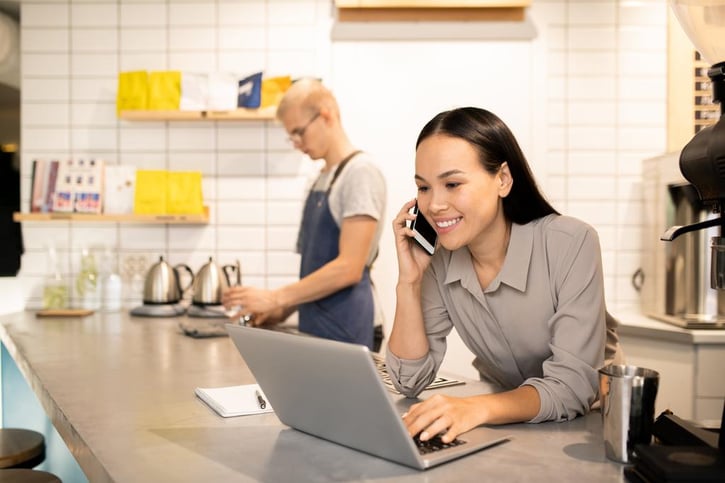In this article, we will discuss some tips for workforce planning that will help your business achieve maximum efficiency.
What is workforce planning?
Workforce planning is the process of identifying and addressing the current and future workforce needs of an organization.
It can include analyzing current workforce data, identifying skills gaps, forecasting future workforce requirements, and developing strategies to attract, retain, and develop employees.
The goal of workforce planning is to ensure that an organization has the right number of employees with the right skills in the right roles to meet its business objectives.
Principles of workforce planning
Here are the principles:
-
Business alignment - Workforce planning should align with the organization's overall business strategy and objectives.
-
Data-driven - Workforce planning should be based on accurate and up-to-date data, including workforce demographics, skills, performance, and turnover.
-
Proactive - Workforce planning should anticipate future workforce needs and take proactive steps to address them rather than reacting to workforce challenges as they arise.
-
Flexibility - Workforce planning should be flexible and adaptable, as workforce needs and business objectives will likely change over time.
-
Collaboration - Workforce planning should involve collaboration across different departments and levels of the organization, including HR, finance, and line management.
-
Continuous improvement - Workforce planning should be continuous, with regular reviews and updates to ensure effectiveness.
-
Employee-centric - Workforce planning should focus on the needs and development of employees to attract, retain, and develop a skilled and engaged workforce.
-
Legal compliance - Workforce planning should comply with all relevant laws and regulations, such as equal opportunity, safety and health, and data protection laws.
Steps for creating workforce planning

Here are the steps to follow:
-
Identify workforce needs - Determine the organization's current and future needs by analyzing business goals, changes in the industry, and workforce demographics.
-
Develop a workforce plan - Create a strategic workforce plan that outlines strategies for meeting workforce needs, including recruitment, training and development, and succession planning.
-
Assess the current workforce - Evaluate the current workforce regarding skills, experience, and performance to identify gaps or surpluses in the workforce plan.
-
Identify and prioritize workforce gaps - Determine which are most critical and prioritize them in the plan.
-
Develop strategies to address gaps - Develop strategies to address workforce gaps, such as recruitment, training, development programs, succession planning, and employee retention initiatives.
-
Implement the plan - Put the workforce plan into action by implementing the strategies and monitoring progress.
-
Evaluate and adjust - Regularly evaluate the plan's effectiveness and make adjustments as necessary to ensure workforce needs are being met. Make sure to create a successful workforce plan!
Types of workforce planning
There are several types of workforce planning, including:
-
Strategic workforce planning: This type of planning involves forecasting long-term workforce needs and developing strategies to meet those needs.
-
Tactical workforce planning: This type of planning involves identifying specific steps and actions that need to be taken to meet short-term workforce needs.
-
Succession planning involves identifying and developing potential replacements for key employees in key roles.
-
Contingency planning: This type of planning involves identifying potential workforce shortages and developing strategies to mitigate those shortages in case they occur.
-
Workforce analytics: This type of planning involves using data and analytics to understand the current workforce and identify trends that can inform workforce planning decisions.
-
Workforce development: This planning involves investing in developing and training employees to ensure they have the necessary skills to meet current and future workforce needs.
Factors affecting workforce planning
Several factors can affect workforce planning, including:
-
Economic conditions: Economic conditions, such as unemployment rates and GDP growth, can impact the availability and demand for labor.
-
Demographics: Changes in population demographics, such as aging or immigration, can impact the size and composition of the workforce.
-
Technological change: Advancements in technology can impact the skills and qualifications required for certain jobs, as well as the overall demand for certain types of labor.
-
Organizational goals and strategies: The goals and strategies of an organization can impact the types and number of employees needed to support those goals and strategies.
-
Government policies: Government policies, such as immigration laws, labor laws, and tax policies, can impact the availability and cost of labor.
-
Social and cultural factors: Social and cultural factors, such as changing attitudes towards work-life balance, can impact the availability and demand for certain types of labor.
-
Organizational culture and leadership style: It also impacts how the organization is managed and how employees are treated, which can affect employee satisfaction, retention, and productivity.
Implement workforce planning

Implementing workforce planning involves several steps, including:
-
Assessing the current workforce: Conduct a thorough analysis to identify skill gaps, strengths, weaknesses, and qualifications.
-
Forecasting future workforce needs: Use data and analytics to forecast future needs based on organizational goals, economic conditions, and demographic trends.
-
Identifying workforce gaps: Compare the current workforce supply to the forecasted future workforce needs to identify any gaps that need to be filled.
-
Developing strategies to fill gaps: Develop strategies to fill any identified workforce gaps, such as recruiting new employees, training and developing current employees, or outsourcing work.
-
Implementing strategies: Put the strategies in place, including hiring new employees, providing training and development opportunities, and outsourcing work as needed.
-
Monitoring and evaluating progress: Regularly monitor and evaluate the progress of workforce planning efforts to ensure effective strategies and make any necessary adjustments.
-
Communicating and involving the workforce: Communicate the workforce planning process and involve employees as much as possible to ensure buy-in and support.
-
Continuously Reviewing and updating: Continuously review and update the workforce plan based on changes in the internal and external environment, and make sure it aligns with the overall business strategy.
Parts of the workforce plan

Here are the parts of the workforce planning process:
-
Objectives: Clearly defined goals and objectives the work plan intends to achieve.
-
Scope: The specific tasks and activities that will be undertaken to achieve the objectives.
-
Timeline: A schedule of when specific tasks and activities will be completed.
-
Resources: The personnel, equipment, and materials required to complete the tasks and activities.
-
Budget: The estimated project costs, including labor costs, materials, and other expenses.
-
Risks: Identification of potential risks and a plan for mitigating or managing those risks.
-
Dependencies: Identify tasks or activities that must be completed before other tasks begin.
-
Communication and reporting: Plan how progress and updates will be communicated to stakeholders.
-
Evaluation and assessment: Plan how the work plan will be evaluated and assessed to determine its effectiveness.
Advantages of workforce planning

Workforce planning has several advantages, including:
-
Cost savings: By forecasting and planning for future workforce needs, organizations can avoid unnecessary costs associated with over-hiring or under-hiring employees.
-
Better employee engagement and retention: By involving employees in the work planning process, organizations can improve employee engagement and retention by providing clear career paths and development opportunities.
-
Improved decision-making: By using data and analytics to inform workforce planning decisions, organizations can make more informed and strategic decisions about their workforce.
-
Better alignment with organizational goals and strategies: By aligning workforce planning with the overall goals and strategies of the organization, organizations can ensure that they have the right employees in place to support those goals and strategies.
-
Better risk management: By identifying potential workforce shortages or other risks, organizations can develop strategies to mitigate those risks, reducing the impact of workforce disruptions on the business.
-
Better talent management: By identifying potential replacements for key employees, organizations can ensure the continuity of business operations in the event of an employee's departure or retirement.
-
Compliance: By having a workforce plan, organizations can ensure compliance with laws and regulations related to workforce planning and management.
-
A better understanding of the workforce: It allows organizations to understand their workforce better and identify trends that can inform workforce planning decisions.
Disadvantages of workforce planning
Workforce planning also has some disadvantages, including:
-
Difficulty in forecasting: Forecasting future workforce needs can be difficult, especially in rapidly changing industries or when dealing with uncertain economic conditions.
-
Costly: It can be costly to implement, especially if it requires new technology or additional staff resources.
-
Time-consuming: It can take time to develop and implement a workforce plan, diverting resources and attention away from other important business activities.
-
Lack of flexibility: A rigid workforce plan can limit an organization's ability to respond quickly to unexpected changes in the business environment.
-
Over-reliance on technology: Some organizations may rely too heavily on technology for workforce planning, leading to a lack of human insight and understanding of workforce-related issues.
-
Resistance to change: Employees may resist changes to their roles or responsibilities that are proposed as part of a workforce plan, which can make implementation difficult.
-
Inadequate data and a lack of relevant information can lead to flawed workforce planning decisions.
-
Lack of coordination: If workforce planning is not coordinated across different departments and levels of the organization, it can lead to inconsistencies and confusion.




